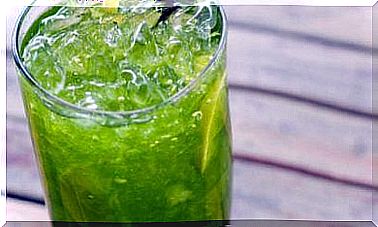Chapped Hands From The Cold – What You Can Do About It
Hands cracked from the cold are not uncommon in winter. Like any other part of the body, the hands suffer from exposure to low temperatures and grim climates. Find out more here.

Hands that are chapped from the cold are annoying, itchy and painful. When the wintry climate makes itself felt in all its violence, the hands of all parts of the skin are first and foremost affected because they are exposed to the cold almost continuously. We need our hands for most activities and we cannot always wear gloves.
The skin is our protective layer, and it is attacked by the cold, causing the skin and the underlying tissue to crack. On the back of the hand there are hair follicles that produce little fat. Thus, the back of the hand is poorly protected against the cold and can dry out more easily.
It looks different with the palms of the hands. These have better protection against climatic conditions, especially since there is increased perspiration there, which has a temperature-regulating effect.
Winter cold makes the hands crack, because it is usually a rather dry cold that dehydrates the cells. If the dermis is dried out, the cell structure is broken up, which is noticeable on the outside through cracks.
Causes of Chapped Hands
It’s not just the cold that causes cracked hands. The winter brings other circumstances with him, which brought with cracked skin in combination are; at the same time, certain conditions unrelated to the season can worsen symptoms.
These include extreme temperature fluctuations. When we go out into the cold from a heated or sometimes overheated room, the skin suffers a thermal shock. Such extreme temperature differences are not good for the dermis.
As we mentioned earlier, cold air is often dry. To counteract this, we sometimes wash our hands more often than usual because we assume that the skin will get more moisture this way. However, this does not have to be the case. On the contrary, wetness in combination with cold can even have a counterproductive effect and enlarge the cracks.

Also, some hygiene or cleaning products that we use at home or at work can crack our hands, regardless of the cold.
E s This is irritating substances that enhance the symptoms described. These include detergents and cleaning agents, insecticides, lime and some soaps. As for the latter, in order to counteract the formation of cracks, soaps have been developed that protect the skin rather than attack it, as is the case with surfactants.
Previous illnesses can also promote the formation of cracks, including above all skin diseases and autoimmune diseases. People with psoriasis find that symptoms worsen each winter. Hormone-related effects such as hypothyroidism or diabetes are also reflected in the complexion.
Measures against cracks caused by the cold
All is not lost just because it is winter, as there are certain steps one can take to prevent the cold from cracking. We name some of them below:
- Wash your hands with lukewarm water: hand washing is essential. The best way to do this is with water, which is neither too cold nor too hot.
- Use gloves: Whenever possible, you should protect your hands with gloves, both against the cold and against substances that irritate the skin. It is important that the skin does not come into direct contact with toxic substances and that the fingers are kept at body temperature.
- Use moisturizing creams: Not all creams or ointments will help protect the skin in winter. It is recommended to use ointments with a moisturizing formula and ingredients specially formulated for dry skin. Also, not only the skin, but also the fingernails should be creamed.

Effective home remedies for chapped hands
Since cracked hands are not a disease that must be treated with medication, but rather certain behavioral measures must be observed in order to counteract the symptoms, one can also resort to home remedies. There are recommended home remedies that alleviate the symptoms by mainly moisturizing the skin and avoiding skin-irritating ingredients.
Such effective home remedies include:
- Vaseline: Vaseline can be used pure, without any further additives. It can put an insulating layer of fat on the skin and thus prevent the cold from penetrating. It is recommended to apply petroleum jelly once a week.
- Wheat: Wheat bran dissolved in lukewarm water is another remedy that is good for the hands. Prepare the wheat bran with boiling water and then let it cool to room temperature. You already have a soothing hand bath in which you can dip your hands again and again. But be careful, always only when the water is only lukewarm.
- Honey: Honey has a number of properties that are good for the skin. It is known that honey acts as an insulating protective layer. In order not to have to apply the sticky honey directly to the skin, mix it with butter, heat the mixture and let it cool down again. One disadvantage of this home remedy is that we leave fat fingers on everything we touch. It is therefore advisable to apply the mixture in moments of rest, when the hands are not busy.
- Egg: Egg yolk is a natural moisturizer. You can apply the beaten egg yolk directly to your hand and leave it on for ten to twenty minutes. Used three times a week should be sufficient to effectively combat cracking of the hands.
Conclusion
Winter temperatures offer all the prerequisites for drying out the skin on your hands and making it crack. To prevent this, hands should be protected by gloves whenever possible. We can also use certain natural products for moisturizing.









